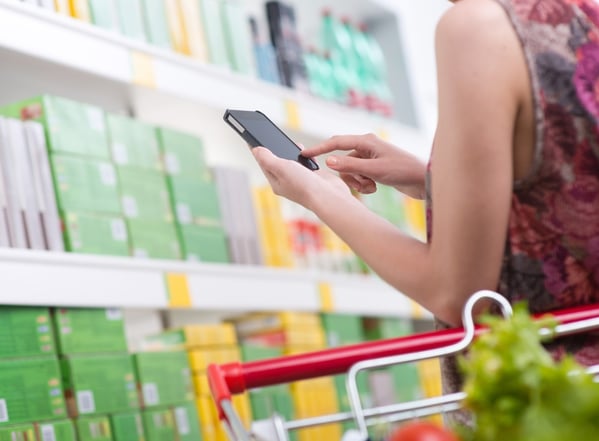 A three-year undertaking by Food Marketing Industry (FMI) and Nielsen called the Digitally Engaged Food Shopper explores the growing phenomena of the digitally engaged shopper. These shoppers are shaking up the grocery store industry. Key findings indicate grocers will reach digital maturation and saturation faster than any other industry before them, including publishing and banking.
A three-year undertaking by Food Marketing Industry (FMI) and Nielsen called the Digitally Engaged Food Shopper explores the growing phenomena of the digitally engaged shopper. These shoppers are shaking up the grocery store industry. Key findings indicate grocers will reach digital maturation and saturation faster than any other industry before them, including publishing and banking.
There are three key areas that grocers are focusing on:
- Getting to know their customers
- Experimentation to establish sustainable solutions for operations, fulfillment, and profitability
- Determining collaborative opportunities that utilize first- and third-party data
Getting to know consumers is no easy task, considering their shopping habits and expectations are evolving at warp speed. Dave Bornmann, Publix Super Markets’ VP of business development and customer service remarks, “This is not a technology question. It’s about knowing the consumer and meeting their experience expectations.”
These interesting facts surfaced in the FMI/Nielson report mentioned above:
- Sixty percent of food shoppers use their mobile devices for deals and coupons
- Fifty percent use retailers’ apps and engage with shops online
- Two-thirds of shoppers feel that mobile devices improve their lives
- One-third of all shoppers desire geo-location apps and ordering buttons
In addition, the report found that both online and in-store shoppers desire customized shopping experiences with product variety and relevancy.
To prepare for the digitally engaged shopper, some grocers are already ramping up experimentation to find sustainable solutions for profitability, while adapting their business model and fulfillment processes to accommodate the evolving marketplace. Armed with a deeper understanding of the consumer, grocers might choose to experiment with store-specific apps and coupons tailored to previous purchases and product choices. Finding solutions for business models and fulfillment are crucial to resolving the gap between expectations of the digital consumer and profitability for the retail grocer.
According to the report, grocers will also need to embrace automation and allow their experimentation to respond to other key findings in the Nielson/FMI report, such as multi-channel shopping, digital experimentation, center store migration, and the “young and digital” factor.
Finally, grocers must seek collaboration that integrates first- and third-party data into their business models. Analytics will help grocery retailers to both understand and respond to the digitally engaged shopper. As Chris Morley, President of U.S. Buy at Nielsen aptly summarizes, “Beyond unified insights that connect the dots across consumer interaction and platforms, the winning strategy will turn metrics into action steps towards effective digital engagement.”